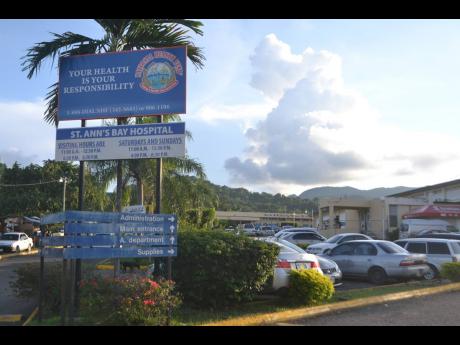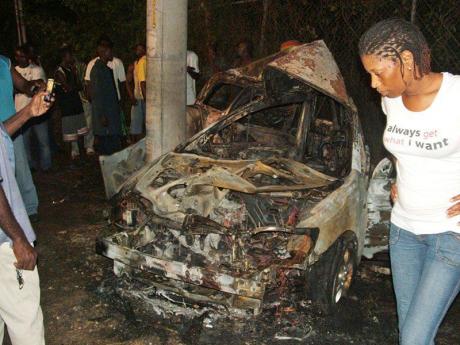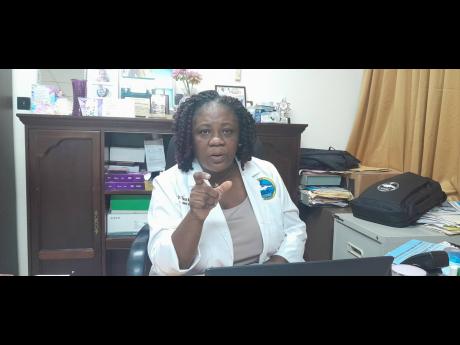DEADLY CRASH CRISIS
St Ann’s EMS grounded; hospital braces for potential surge in holiday accident victims
Except for the Jamaica Defence Force (JDF) or the St Ann’s Bay Regional Hospital going against regular protocol to deploy one of their vehicles, there is no public ambulance to respond to road accidents in the island’s largest parish.
The situation triggered heightened concern last week even as the police prepared for at least six major parties for the ‘Emancipendence’ period – between August 1, Emancipation Day, and August 6, Independence Day.
Characterised by much partying and merrymaking, holiday periods traditionally see a spike in road accidents, mainly caused by speeding and alcohol use.
In a few accident cases, private ambulance services are tapped or the St Ann’s Bay Hospital may dispatch one of its ambulances, which are typically reserved for transferring hospital patients to critical examinations. But the majority of motor vehicle crash victims in the parish are either transported to the hospital by passers-by or, if available, in the back of a police service vehicle.
Compounding the crisis is the fact that despite firefighters being trained, the Jamaica Fire Brigade’s (JFB) St Ann Division’s Emergency Medical Services (EMS) remains dormant, bereft of an ambulance and its required resources to respond to calls.
With some of the most accident-prone sections of the North-South Highway and other deadly corridors going through the parish, emergency service workers say a functioning EMS system would go a long way in saving lives.
That would also ease the pressure on St Ann’s healthcare system, with the parish recording 23 fatal collisions with 29 deaths so far this year. There have also been countless non-fatal crashes and two recent mass-casualty accidents which overwhelmed the St Ann’s Bay Accident and Emergency (A&E) systems.
While firefighters are often the first emergency personnel to turn up on accident scenes in the parish, and while they conduct immediate medical procedures, they are often challenged with moving victims for hospital treatment.
“That is a discussion for another time,” offered Superintendent Anthony Hinds, who last weekend directed queries about the failure to get the parish’s EMS system off the ground to the JFB headquarters.
Last Friday, however, individuals with knowledge of the current situation argued that many victims who perish in traffic accidents in the parish could have survived had there been an effective, well-resourced EMS.
“Sometimes when things happen on the highway, it is the JDF’s ambulance that comes and does the transportation,” one source close to the fire station told The Sunday Gleaner.
“But that is very technical because the JDF has to receive that call from the firefighters’ superiors,” the person added, explaining that this often slows down the response.
“The firefighters are on the scene quickly because, within a minute of getting the call, they are ready. But the firefighters can’t move the people,” the source continued. “There are firefighters who are trained and certified. They even got their certificates and the certificates have expired, and still, the Emergency Medical Services in St Ann Division cannot start.”
The source questioned the seeming lack of will to get the EMS up and running, noting that the parish recorded an average of 21 fatal crashes in the last three years and has witnessed some of the most horrific mass casualties in recent times.
“When the firefighters go out there, a man may have a 70 per cent chance to live. But without the appropriate transportation, that is a dead man. Sometimes a passer-by might say, ‘throw him in my car’, which is what happens in many of the cases, but by the time they reach hospital, he’s gone,” the source continued, noting the psychological toll such cases have on staff.
“Firefighters stay on high alert, and every response team has a trained and certified EMT (emergency medical technician) on the dispatch. So the minute there is a call of an accident, the medic is on board to ensure top-tier care is given. The deficiency ... comes with [the lack of] an ambulance that is needed to sustain life,” the source continued.
Mass-casualty accidents put strain on hospital, says SMO
Two Sundays ago, Jevaughn Hyatt, a 30-year-old of Cardiff Hall, was taken to the hospital motionless with his feet sticking out of the trunk of a car. His head leaned to the side and his eyes barely opened as staff at the St Ann’s Bay Hospital’s A&E hoisted his broken frame on to a stretcher and wheeled him inside.
As this unfolded minutes after 2 a.m., several people, including the driver of the Toyota Probox, tried their best to convince each other that he was still alive.
“Him nuh dead, man. Him going to make it!” one man shouted, clutching his head as others paced back and forth, looking on anxiously.
Hyatt did not make it.
In fact, the police believe he died at the crash site, long before he arrived at A&E, after failing to negotiate a corner on the Laughlands main road in St Ann’s Bay. The vehicle veered off the road and flipped several times. They suspect he may have been speeding and intoxicated.
Hyatt was among five crash victims who turned up at the hospital that night – and that is a slow night in St Ann, said hospital workers, who dub the parish as the “party and accident hub of Jamaica”.
Last Friday, staff at St Ann’s Bay A&E were anticipating an even busier ‘Emancipendence’ period.
But even the most well-established plans cannot hold against mass-casualty crashes, those involving multiple vehicles and several patients flooding the hospital at a time, explained Tanya Hamilton-Johnson, senior medical officer (SMO) at the St Ann’s Bay Regional Hospital.
And as August has historically been the month with the most accident victims turning up at the hospital, hospital staff stand ready for any eventualities, even if it means being pulled from other departments, said Hamilton-Johnson.
“We try to get blood support because as we know we are in what we call ‘mass cas’ country’ in St Ann’s Bay and the north coast. We initiate a programme where we try to [have] blood drives as often as we can. The last one we did was on Labour Day, where we collected 78 units of blood,” she explained, adding that one unit can save up to three lives.
“A lot of what we collect is used up in surgery for motor vehicle crashes, and what that is doing is taking away the blood that is supposed to be used to treat a patient for cancer or anaemia or for that pregnant patient that needs blood as she is about to deliver,” explained Hamilton-Johnson. “It drains the resources. When you have a trauma patient, you use up blood supply, manpower, laboratory services, costly reagents, and I’ve not even mentioned the X-rays.
“When you put all of the cost of that initial management, besides post-operation care, it is very significant,” Hamilton-Johnson told The Sunday Gleaner.
The SMO explained that head injuries from a high number of motorbike crashes, multiple fractures to the lower and upper limbs, and trauma to the abdomen and chest are among the common cases at the hospital. In many cases, those victims have to be transferred to other hospitals for care.
“Most of these persons are below 50 – young persons, working persons – and what these accidents would have done is to cause them to lose man-hours from work, which, in the end, leads to families being deprived of necessities,” said Hamilton-Johnson.
She disclosed that in 2019, the hospital saw 1,699 victims of motor vehicle accidents. In 2020, there were 1,181 such patients, and 1,143 in 2021 – falls she credited to the COVID-19 lockdown.
By 2022, the numbers started to rise again with 1,586 cases; and for last year, 1,698 people were treated at the hospital for motor vehicle injuries.



